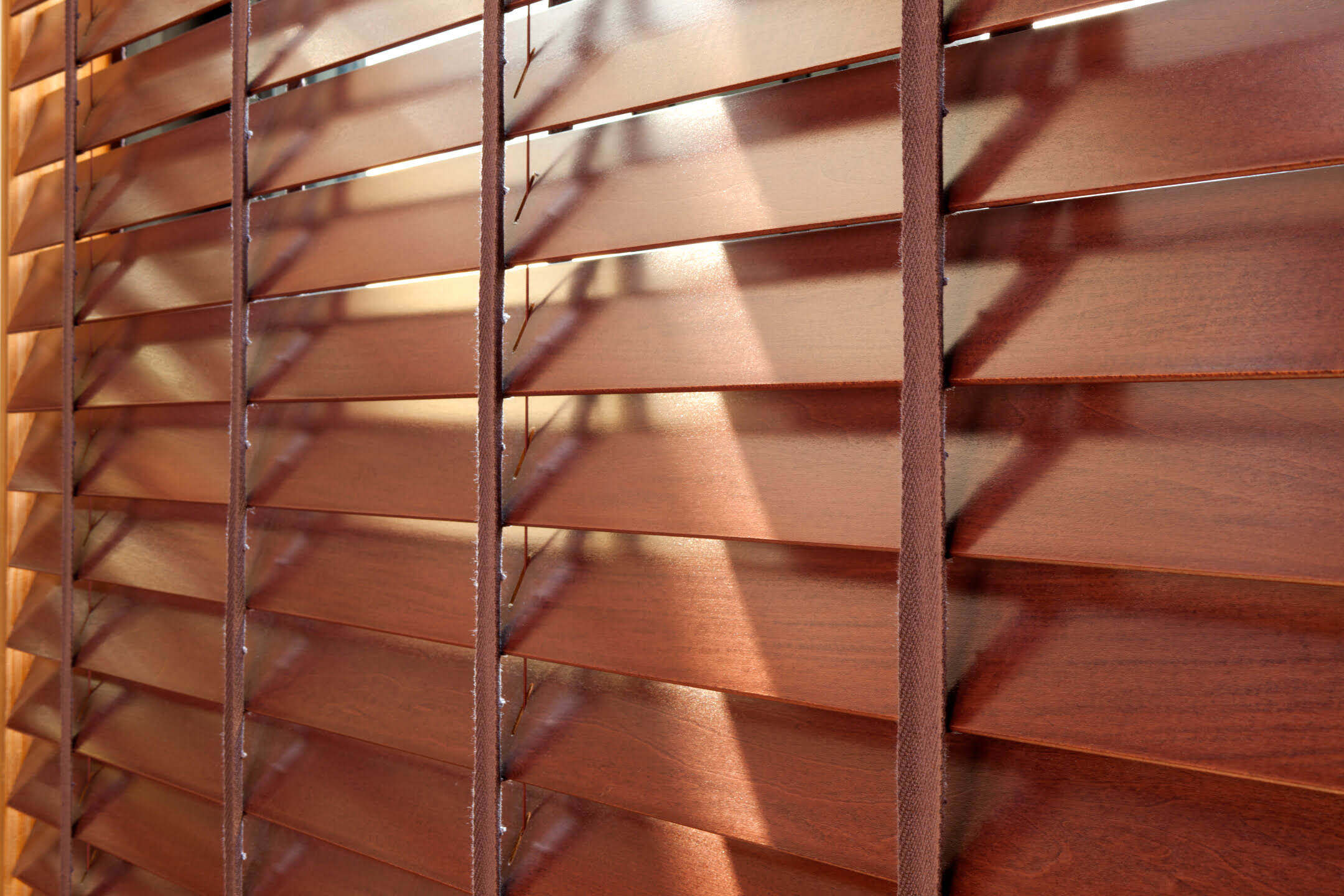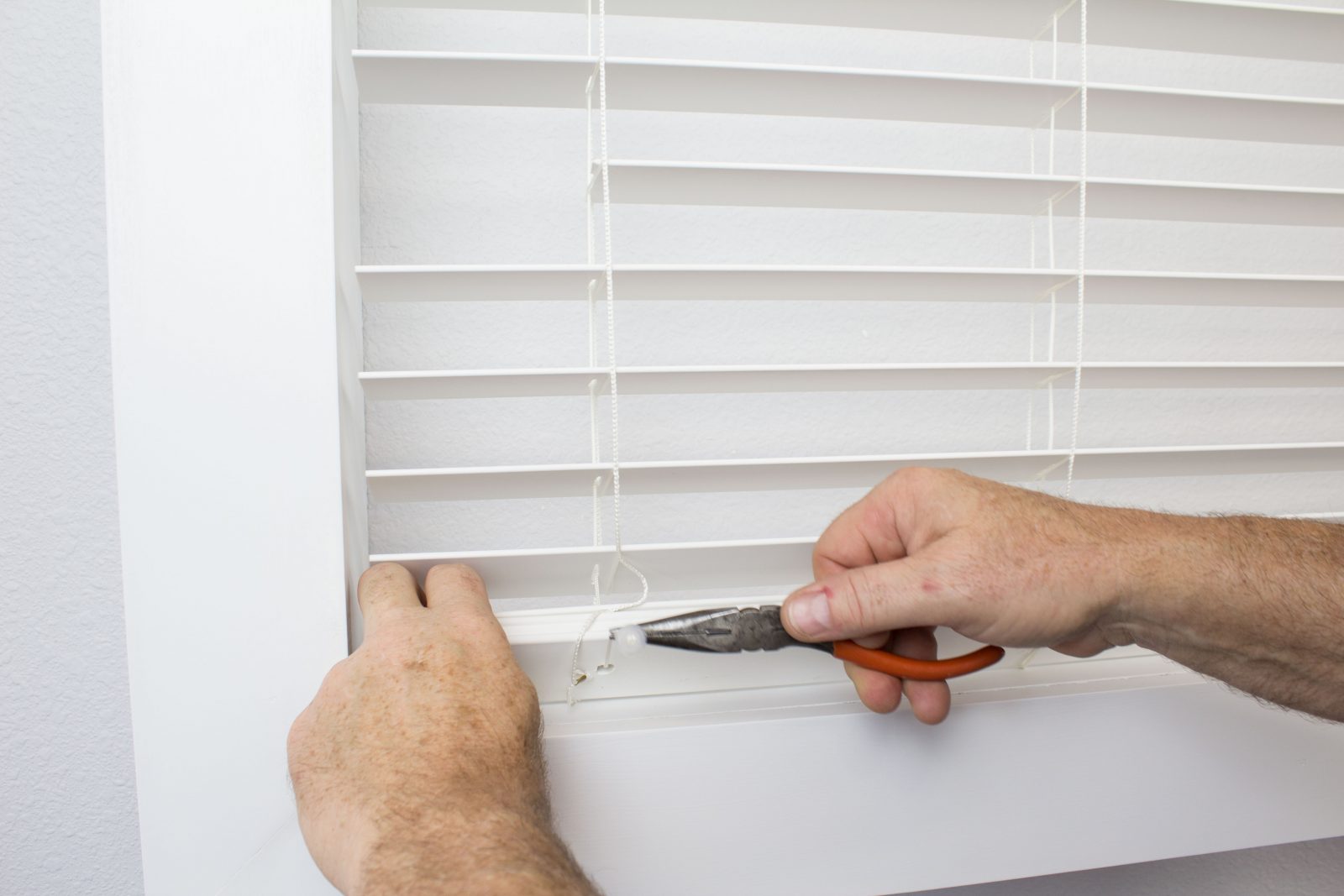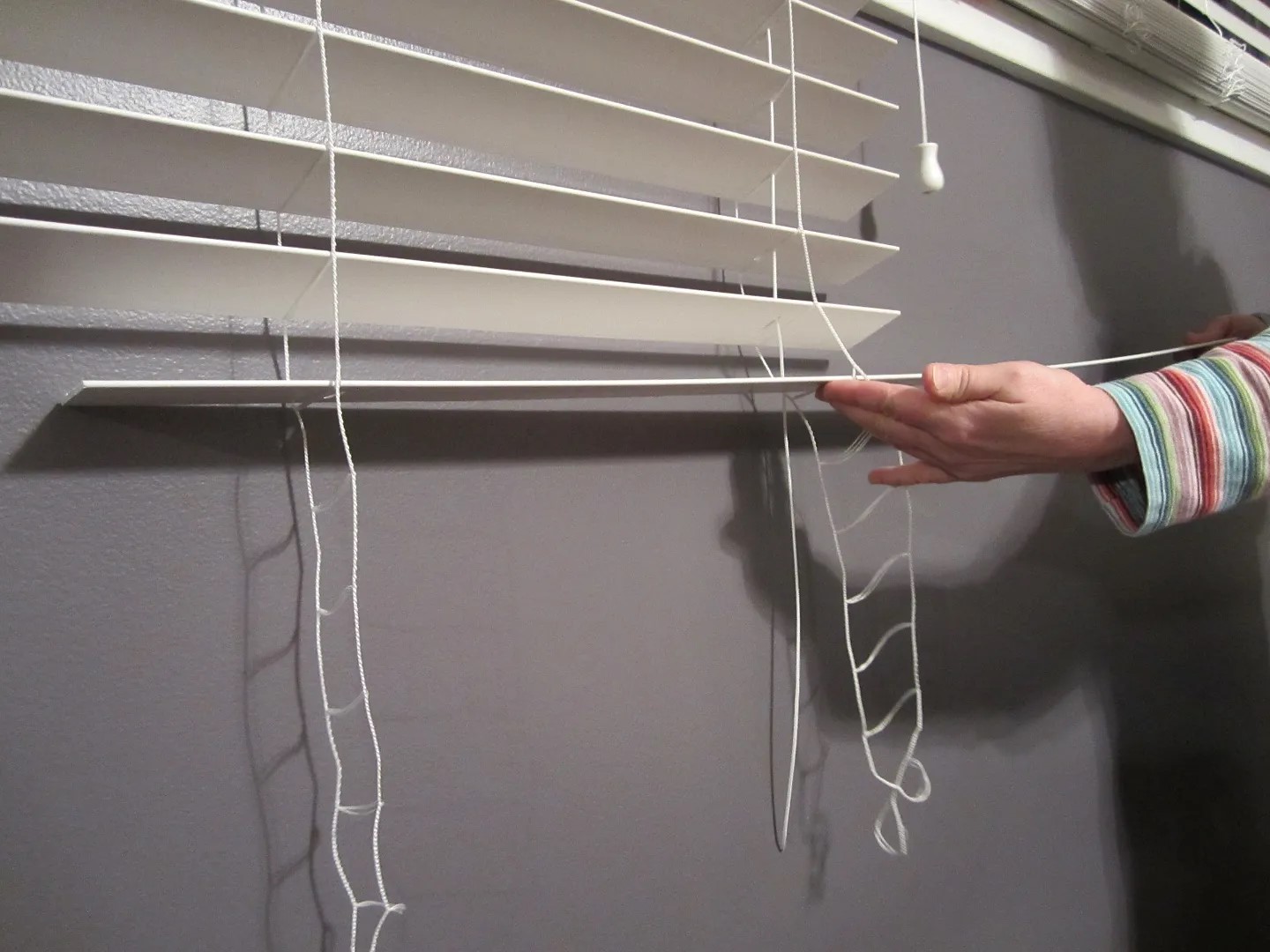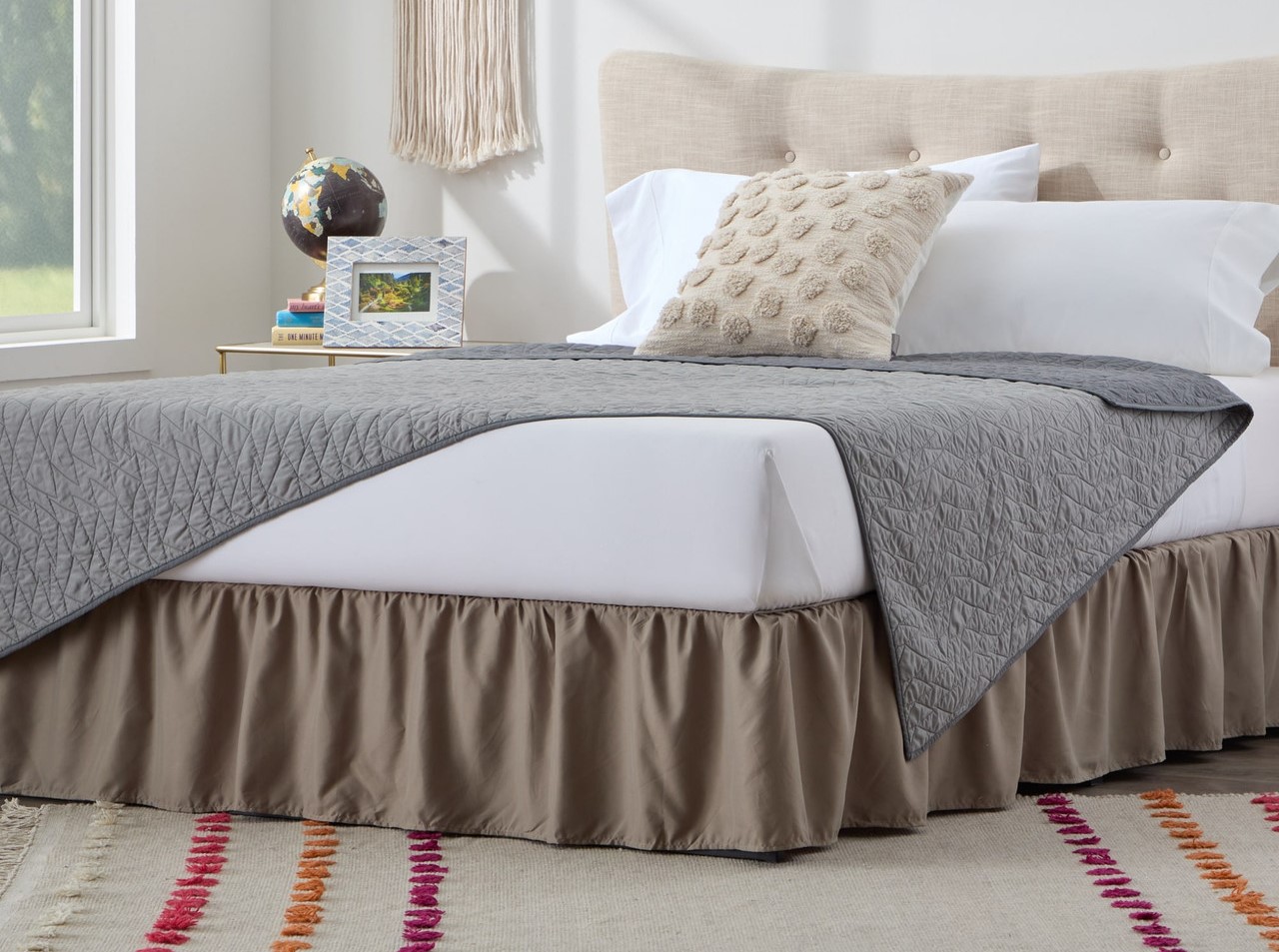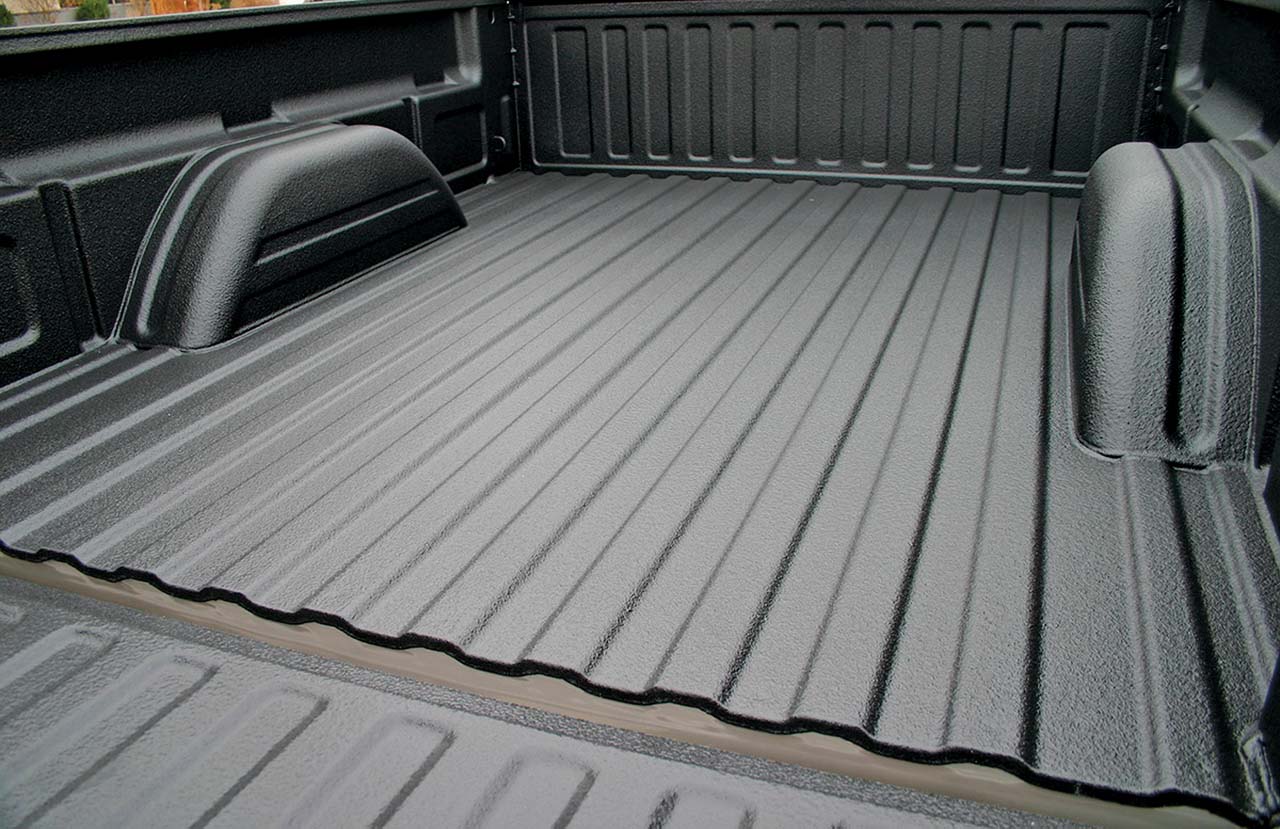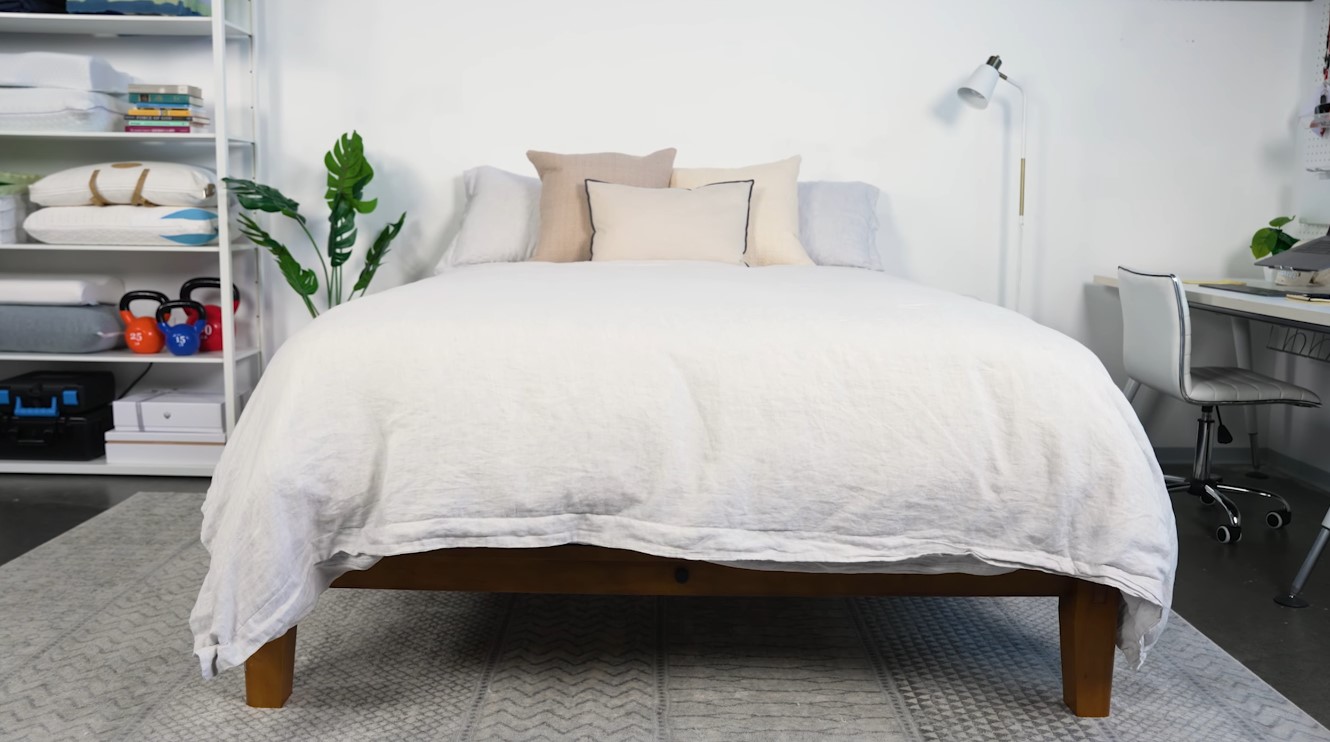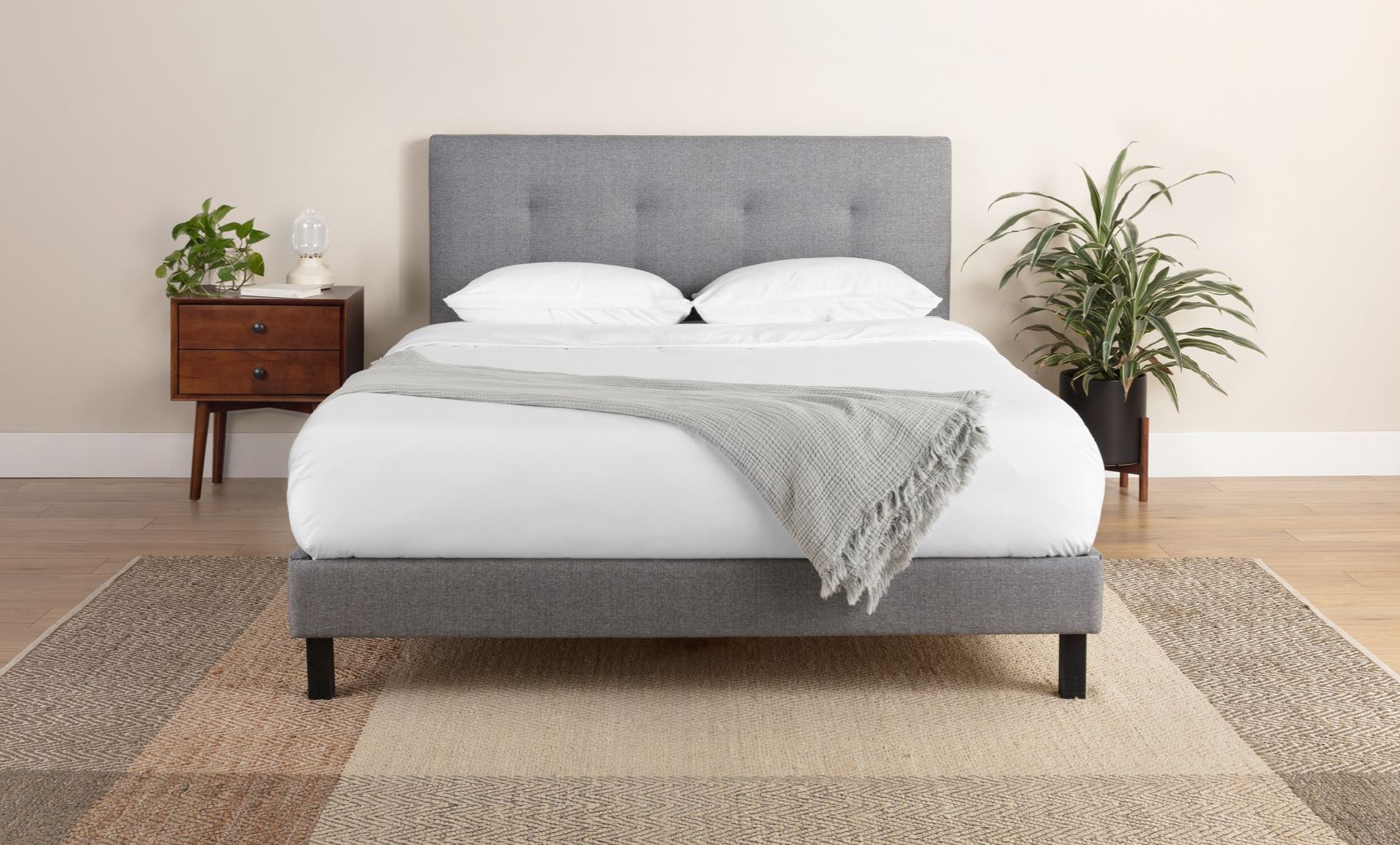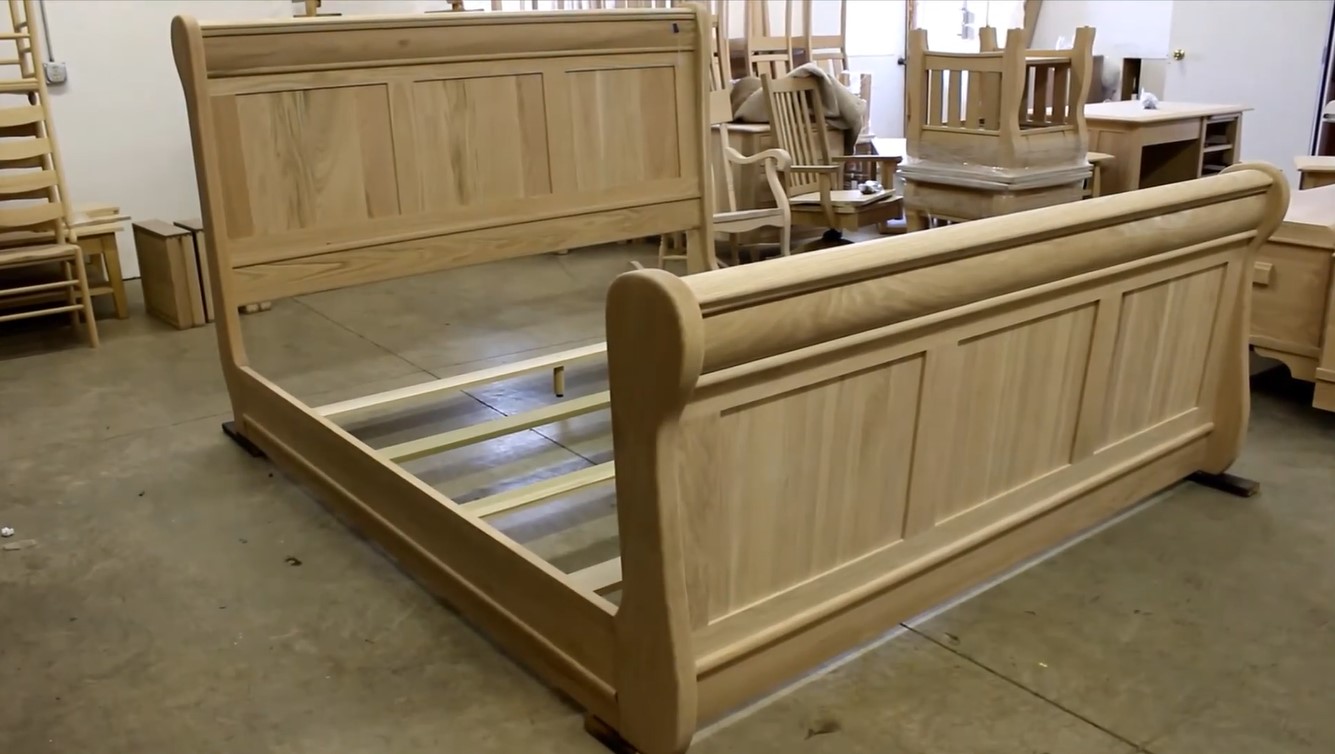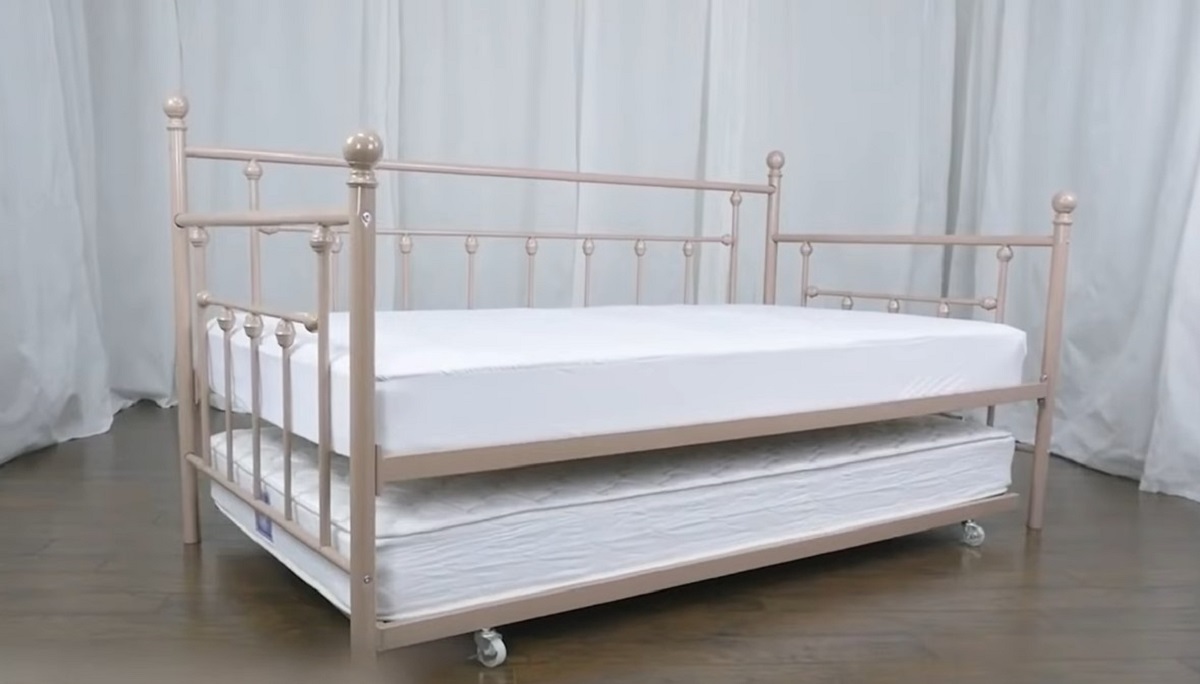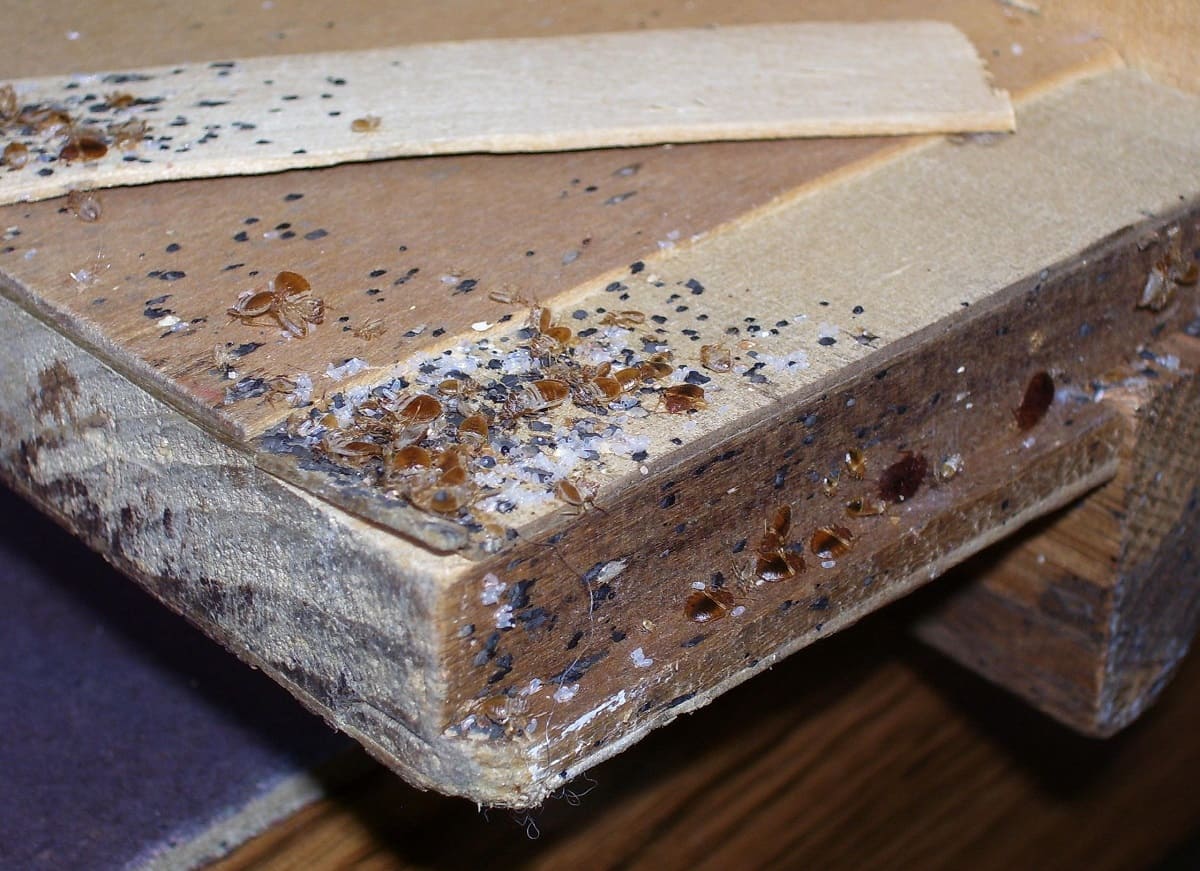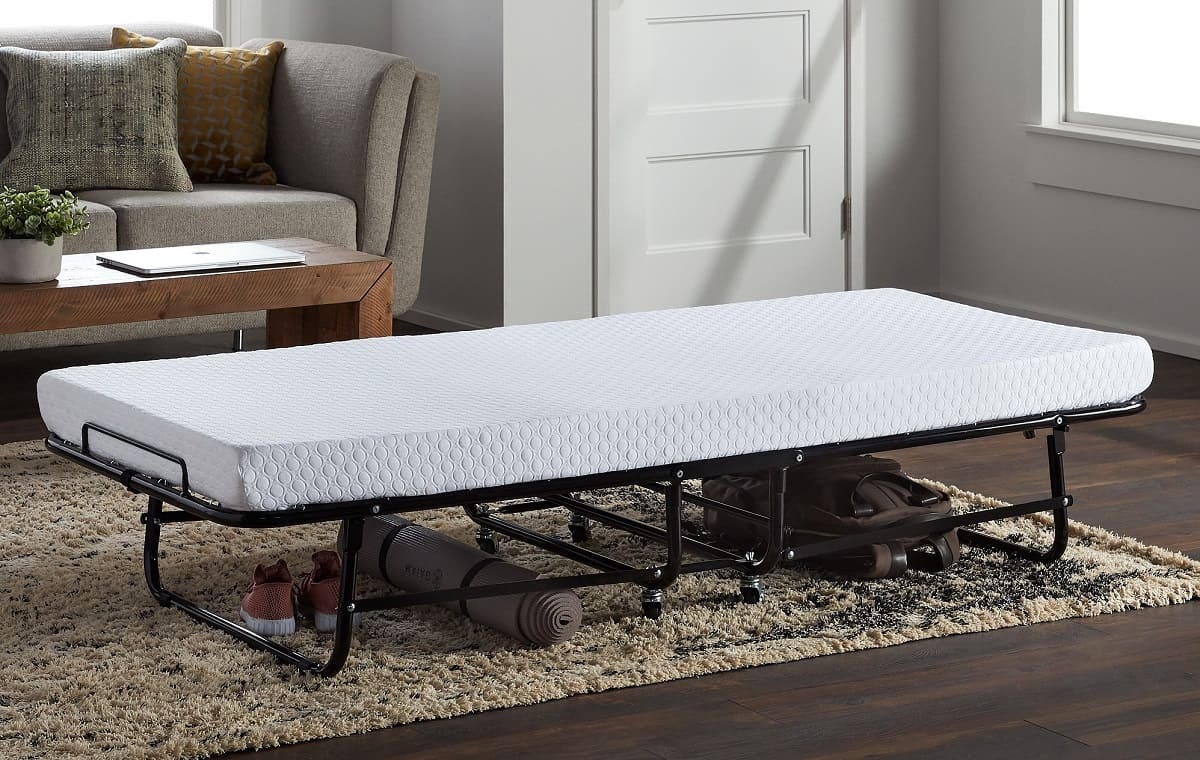Home>Furniture>Bedroom Furniture>What Are Slats In A Bed
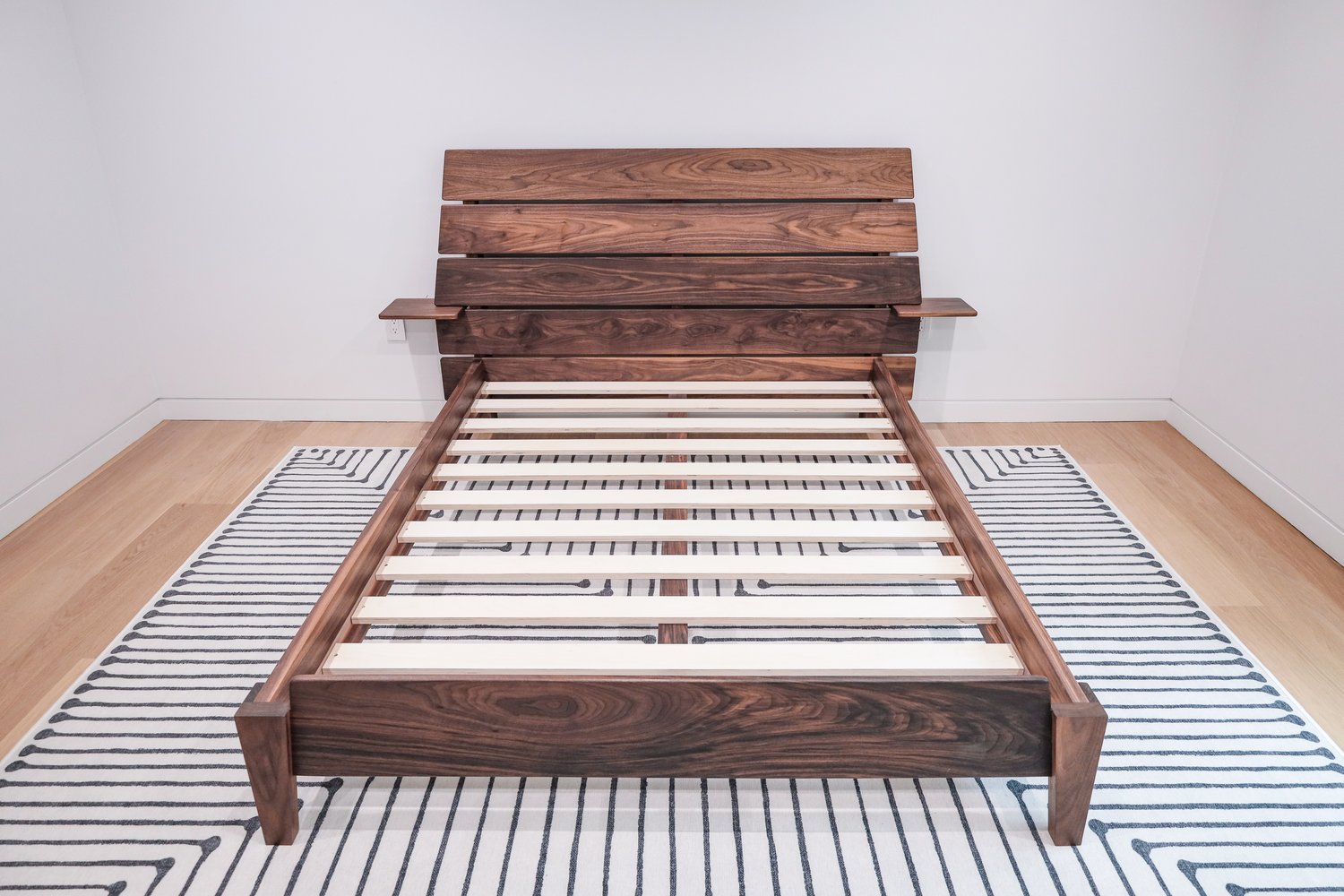

Bedroom Furniture
What Are Slats In A Bed
Modified: May 6, 2024
Discover the purpose and benefits of slats in a bed with our guide. Transform your bedroom with quality slats and elevate your sleeping experience. Choose from a wide range of slat options in our bedroom furniture collection.
(Many of the links in this article redirect to a specific reviewed product. Your purchase of these products through affiliate links helps to generate commission for Storables.com, at no extra cost. Learn more)
Introduction
Welcome to our comprehensive guide on slats in a bed. When it comes to bedroom furniture, slats play a crucial role in providing support and stability to your mattress. But what exactly are slats and why are they important?
Slats are narrow, horizontal pieces of wood or metal that span the width of a bed frame. They are typically placed in parallel rows, running from one side of the bed frame to the other. The main function of slats is to provide a solid foundation for your mattress, distributing your body weight evenly and preventing sagging or discomfort while you sleep.
While some bed frames come with integral slats, others require separate slats to be purchased and installed. In this guide, we will explore the different types of slats, their benefits, installation methods, and more. So, whether you’re considering buying a new bed frame or simply want to upgrade your existing one, read on to discover all you need to know about slats in a bed.
Key Takeaways:
- Slats are essential for mattress support, preventing sagging, and promoting airflow. Choose the right type based on mattress type, weight capacity, and adjustability for optimal comfort and longevity.
- Proper installation and maintenance of slats are crucial for stability and support. Regularly inspect and address common issues like sagging, movement, or noise to ensure a comfortable and reliable bed setup.
Read more: What Are Bed Frame Slats
Definition of Slats
Slats, often referred to as bed slats or mattress support systems, are essential components of a bed frame. They are designed to provide a supportive surface for your mattress, ensuring proper weight distribution and preventing sagging. Slats are typically made of sturdy materials such as wood or metal, and they come in various sizes and configurations to accommodate different types of bed frames.
The primary purpose of slats is to create a stable foundation that supports the mattress and its occupants. They help to evenly distribute body weight, reducing pressure points and ensuring a comfortable sleeping surface. By elevating the mattress off the ground, slats also promote airflow and ventilation, preventing the accumulation of moisture and the growth of mold or mildew.
Slats are positioned horizontally across the width of the bed frame, spaced evenly to ensure optimal support. The number and thickness of slats can vary depending on the specific bed frame design and the weight capacity it is designed to handle. Thicker slats are typically used for heavier individuals or larger mattress sizes to provide additional durability and support.
Furthermore, slats are often equipped with additional features to enhance their functionality. For example, some slats have adjustable settings, allowing for personalized support and customization. Others may include a center support beam or leg to reinforce the stability of the bed frame and prevent sagging in the middle.
Overall, slats are fundamental components of a bed frame that ensure the structural integrity and longevity of your mattress. They not only provide support and comfort but also contribute to the overall aesthetic appeal of the bed, making them an essential consideration when selecting a new bed frame or upgrading an existing one.
Benefits of Slats in a Bed
Slats serve several important purposes in a bed frame, offering numerous benefits for both the mattress and the sleeper. Let’s explore some of the key advantages of incorporating slats into your bed setup:
1. Support and Comfort: Slats provide a solid foundation for your mattress, ensuring even weight distribution and proper support. They help to enhance the overall comfort of your sleeping surface, reducing the risk of sagging and promoting a more restful night’s sleep.
2. Prevents Sagging: By supporting the mattress from beneath, slats help to prevent sagging, which can occur over time with inadequate support. They keep the mattress in its intended shape, maintaining its structural integrity and extending its lifespan.
3. Proper Air Circulation: Slats allow for airflow and ventilation underneath the mattress, reducing the buildup of heat and moisture. This can help regulate your body temperature while you sleep and prevent the growth of mold, mildew, or trapped odors.
4. Durability and Longevity: With the right slat system, your mattress is less likely to develop premature wear and tear. The consistent support offered by slats helps to prevent excessive strain on the mattress, ensuring its longevity and preserving its quality over time.
5. Adjustable Support: Some slat systems feature adjustable settings, allowing you to customize the level of support according to your preferences. This can be particularly beneficial for individuals with specific comfort needs or those who prefer a firmer or softer sleeping surface.
6. Versatility: Slats are compatible with various types of mattresses, including foam, innerspring, and hybrid models. They provide a versatile support system that can adapt to different mattress types and sleeping styles, making them a versatile choice for any bed setup.
7. Cost-Effective Alternative: Using slats as a mattress support system can be a cost-effective alternative to a traditional box spring or foundation. They offer comparable support and durability at a lower price point, making them an excellent option for budget-conscious individuals.
By incorporating slats into your bed frame, you can enhance the comfort, support, and overall longevity of your mattress. Whether you’re looking for proper weight distribution, airflow, or customization options, slats offer a range of benefits that can significantly improve your sleep experience.
Types of Slats
When it comes to choosing slats for your bed frame, there are various options available to suit different preferences and needs. Here are some common types of slats you can consider:
1. Solid Wood Slats: Solid wood slats are a popular choice due to their strength and durability. These slats are typically made from hardwood such as birch, oak, or pine. They provide excellent support for the mattress and are less prone to bending or warping compared to other materials.
2. Laminated Wood Slats: Laminated wood slats are constructed by bonding multiple layers of wood together. This process enhances their strength and prevents splitting or cracking. Laminated slats are known for their flexibility, allowing for slight movement and contouring to the body’s shape.
3. Metal Slats: Metal slats offer a sturdy and durable option for mattress support. They are typically made from steel or aluminum and provide excellent stability. Metal slats often come with a protective coating to prevent rust and corrosion, ensuring longevity and aesthetics.
4. Sprung Slats: Sprung slats, also known as flexible slats, feature a curved design with built-in springs. These slats provide additional support and shock absorption, allowing the mattress to respond to your body weight and movements. Sprung slats can enhance the comfort and longevity of your mattress.
5. Slatted Bed Bases: Slatted bed bases are complete systems that consist of a frame with incorporated slats. These bases often come with adjustable settings to customize the support level. Some slatted bed bases feature individual slats that can be adjusted independently for personalized comfort.
6. Mesh or Fabric Slats: Mesh or fabric slats are made from a strong, breathable material that spans the width of the bed frame. These slats provide a more flexible and supportive surface for the mattress. They also offer increased airflow and ventilation, promoting a cooler sleeping environment.
It’s important to consider factors such as mattress type, sleeper weight, and personal preferences when choosing the type of slats for your bed frame. Solid wood slats are generally the most popular and widely used option due to their stability and durability. However, other types of slats, such as sprung slats or mesh slats, may offer unique benefits and enhanced comfort for specific individuals.
Before making a decision, carefully evaluate the different types of slats available and choose the one that best suits your needs and preferences. Remember, the type of slats you select will significantly impact the overall support, comfort, and longevity of your mattress.
When choosing slats for a bed, make sure they are sturdy and properly spaced to provide adequate support for the mattress. Look for slats made of durable materials like solid wood or metal, and ensure they are placed no more than 3 inches apart to prevent mattress sagging.
Factors to Consider When Choosing Slats
Choosing the right slats for your bed frame is essential for ensuring optimal support, comfort, and longevity of your mattress. Here are some key factors to consider when making your selection:
1. Mattress Type: Different types of mattresses have varying support requirements. For example, memory foam mattresses might benefit from slats that are closer together to provide more even support, while innerspring mattresses may require slightly wider gaps for increased airflow. Consider the specific needs of your mattress when choosing slats.
2. Weight Capacity: Take into account the weight capacity of the slats and bed frame. Heavier individuals or those who share the bed with a partner may require slats that are thicker or have a higher weight capacity to ensure proper support and prevent sagging.
3. Gap Size: The distance between the slats can impact the support and comfort of your mattress. Ensure that the gaps are not too wide, as this can lead to sagging or instability. On the other hand, if the gaps are too narrow, it may restrict airflow and ventilation. Typically, a gap of 2-3 inches (5-7.5 cm) between slats is considered ideal.
4. Material and Construction: Consider the material and construction of the slats. Solid wood slats are known for their strength and durability, while laminated wood slats offer flexibility. Metal slats provide sturdy support, and mesh or fabric slats offer increased ventilation. Choose a material that aligns with your preferences in terms of aesthetics and desired level of support.
5. Adjustability: Some slat systems offer adjustability, allowing for personalized support. This can be beneficial if you have specific comfort preferences or if you need varying levels of support for different areas of your body. Adjustable slats can provide a customized sleeping experience tailored to your individual needs.
6. Installation: Consider the ease of installation when choosing slats. Some slat systems come pre-assembled or require minimal assembly, while others may be more complex to set up. Ensure that the installation process aligns with your capabilities and resources.
7. Compatibility: Verify that the slats are compatible with your specific bed frame. Check the dimensions and requirements of your bed frame to ensure that the slat system will fit properly and provide adequate support. Additionally, consider any special features or requirements of your bed frame, such as the need for a center support beam or legs.
8. Budget: Lastly, consider your budget when selecting slats. The cost can vary depending on the material, construction, and features of the slats. Set a budget and find a balance between quality and affordability to ensure you’re making a wise investment.
By carefully considering these factors, you will be able to choose the right slats that provide optimal support, comfort, and durability for your specific needs and preferences. Remember to consult the manufacturer’s recommendations and seek professional advice if needed to ensure the best outcome for your bed setup.
Read more: How To Add Slats To A Bed Frame
Installation and Maintenance of Slats
Installing slats in your bed frame is a relatively straightforward process, and proper maintenance will help ensure their longevity. Here are some guidelines to follow for installation and maintenance:
1. Installation:
- Measure and Prepare: Before installation, measure the interior width of your bed frame to ensure that the slats will fit properly. If needed, cut the slats to the appropriate length.
- Position the Slats: Lay the slats horizontally across the bed frame, ensuring they are evenly spaced. The recommended gap between slats is usually 2-3 inches (5-7.5 cm).
- Secure the Slats: Depending on your bed frame design, secure the slats using screws, brackets, or other provided fasteners. Follow the manufacturer’s instructions for proper installation to ensure stability and support.
- Check Stability: After the installation, ensure that the slats are securely in place and provide even support across the entire bed surface.
2. Maintenance:
- Clean Regularly: Dust and debris can accumulate on the slats over time. Regularly clean the slats using a vacuum cleaner or a soft cloth to maintain hygiene and prevent the buildup of allergens.
- Inspect for Damage: Routinely inspect the slats for any signs of damage, such as cracks or warping. Address any issues promptly to avoid compromising the support and integrity of your mattress.
- Rotate or Flip: If your slats are reversible or adjustable, consider rotating or flipping them occasionally to distribute the weight more evenly. This can help prevent sagging in specific areas.
- Address Bed Frame Issues: The condition of your bed frame can also impact the performance of the slats. Regularly inspect and address any issues with the bed frame, such as loose screws or weakened supports, to maintain stability and support.
- Follow Manufacturer’s Instructions: Always follow the manufacturer’s guidelines and recommendations for cleaning and maintenance specific to your slat system. These instructions may vary depending on the material and design of the slats.
By following proper installation techniques and implementing regular maintenance practices, you can ensure the stability, support, and longevity of your slats. Regularly inspecting and maintaining the slats will help prevent issues such as sagging, creaking, or damage, giving you a comfortable and reliable bed setup.
Common Issues with Slats
While slats are designed to provide support and stability to your bed, there are a few common issues that can arise. Understanding these issues will help you address them promptly and maintain the optimal performance of your slats. Here are some of the common issues to be aware of:
1. Sagging: One of the main issues with slats is sagging, which can occur over time due to the weight and pressure applied to the slats. This can lead to an uneven sleeping surface, discomfort, and reduced support for your mattress. Regularly inspect the slats for signs of sagging and consider rotating or adjusting the slats to distribute the weight evenly.
2. Slats Moving Out of Place: Slats can sometimes shift or move out of position, causing an uneven sleeping surface and potentially compromising the stability of the bed frame. This issue can occur due to inadequate fastening or loose screws. Ensure that the slats are securely fastened and periodically check for any movement or shifting.
3. Cracked or Broken Slats: Over time, slats can experience wear and tear, resulting in cracks or breakage. This can lead to instability and reduced support for the mattress. Inspect the slats regularly for any signs of damage and replace any cracked or broken slats as soon as possible to maintain the structural integrity of your bed.
4. Inadequate Support: In some cases, the slats may not provide adequate support for the mattress and the sleeper. This can occur if the slats are too thin, the gaps between slats are too wide, or if the slats are not properly aligned. Consider upgrading to thicker or more supportive slats, adjusting the gaps if possible, or adding additional slats to improve the support and comfort of your bed.
5. Noisy or Creaking Slats: Another common issue is when slats produce noise or creaking sounds during movement. This can disrupt your sleep and can be caused by loose fasteners or gaps between the slats and the bed frame. Check for loose screws or brackets and tighten them as needed, or consider using rubber pads or felt strips to minimize friction and noise.
6. Insufficient Ventilation: Solid slats or slats with narrow gaps may restrict airflow and ventilation underneath the mattress. This can lead to the accumulation of heat and moisture, potentially causing discomfort and promoting the growth of mold or mildew. Consider using slats with wider gaps or opting for mesh or fabric slats that offer increased ventilation.
Remember, proper maintenance, regular inspections, and timely addressing of these common issues will help ensure the longevity, support, and comfort of your slats. If you encounter persistent or severe issues, consult the manufacturer or a professional for guidance and assistance.
Conclusion
Slats play a crucial role in providing support and stability to your bed frame and mattress. They distribute your body weight evenly, prevent sagging, and contribute to a comfortable sleep experience. Choosing the right slats for your bed frame is important for ensuring optimal support, durability, and overall mattress performance.
From solid wood to metal, laminated to sprung, there are various types of slats available to suit different preferences and needs. Consider factors such as mattress type, weight capacity, gap size, and adjustability when selecting slats that align with your specific requirements.
Proper installation of slats involves measuring and preparing, positioning and securing them in place, and ensuring stability. Regular maintenance such as cleaning, inspecting for damage, and addressing potential issues will help maintain the longevity and performance of your slats.
While some common issues, like sagging or slats moving out of place, may arise over time, addressing them promptly will help maintain the stability and support of your bed frame. Cracked or broken slats should be replaced to ensure the structural integrity of your bed, while noisy or creaking slats can be resolved by tightening screws or using friction-reducing materials. Adequate ventilation can be achieved through the use of slats with wider gaps or those made of breathable materials.
In conclusion, slats are an essential component of a bed frame and contribute to the overall comfort, support, and longevity of your mattress. By choosing the right slats, properly installing them, and maintaining their condition, you can enjoy a restful sleep and prolong the lifespan of your bed setup. Consider your specific needs, preferences, and budget when selecting slats and consult with professionals if needed to ensure the best outcome for your sleep experience.
Now that you've got a solid grasp on bed slats, why stop there? Get comfy with our next read on mattress foundations, where we dive into their roles and why they're pivotal for your sleep setup. Knowing more about these foundations can truly transform how you view and use your bedroom space.
Frequently Asked Questions about What Are Slats In A Bed
Was this page helpful?
At Storables.com, we guarantee accurate and reliable information. Our content, validated by Expert Board Contributors, is crafted following stringent Editorial Policies. We're committed to providing you with well-researched, expert-backed insights for all your informational needs.
